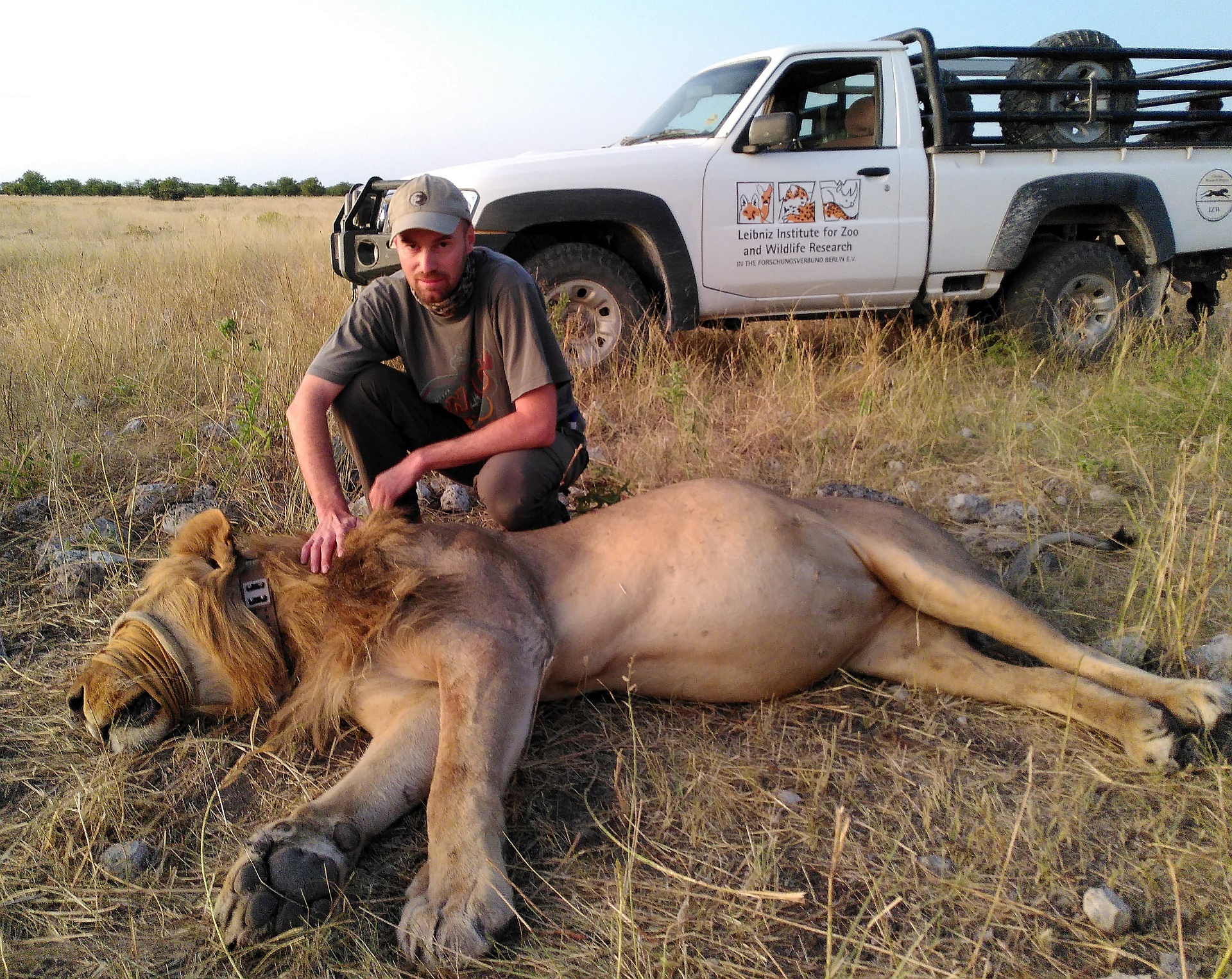Dr Ortwin Aschenborn is the veterinarian in the GAIA consortium and can look back on many years of experience in the management of lion prides in Etosha National Park in Namibia. During his time as head veterinarian of the park, the first large-scale lion census was carried out in 2010. At GAIA, he is now investigating the connections between predators, scavengers and prey in the savannah and is developing systems that turn data of predators and scavengers into information about the state of ecosystems. Together with Zoo Berlin, he is currently conducting a research project on the lion population in Etosha National Park. Modern animal tags and artificial intelligence play a central role in this, forming an interface between the animals and science and unveiling knowledge of lions, hyenas and vultures available to humans. But back to the lions – in four questions and answers, Dr Aschenborn explains how many there are in Etosha and why it is best to search for and count them at night using loudspeakers and thermal imaging cameras:
How does a call-up survey of predators work?
The procedure is actually quite simple. We take advantage of the fact that all predators are mainly foraging at night and rely, among other senses, on their hearing to find prey. Loudspeakers are mounted on an off-road vehicle, which we use to play the calls of an injured or distressed wildebeest or other prey animal. We do this for about an hour at a time, in different directions. Spotted hyenas, jackals, lions or leopards within a radius of about three kilometres are very likely to come to the source of the calls and we can see, identify and count them with the thermal imaging cameras. Over a period of a good week and with several teams, we can cover a large area. In the Greater Etosha Carnivore Programme, the University of Ljubljana, the Ongava Research Centre and park employees as well as the Etosha Ecological Institute were involved in the latest count in the park alongside the Leibniz-IZW.
How does the approach perform in comparison with other counting methods?
Compared to other methods such as tagging animals or systematic surveys with wildlife cameras, such as those regularly carried out by the Leibniz-IZW on cheetah marking trees throughout Namibia, a call-up survey is somewhat less accurate. Some individuals do not respond to the calls, however. Reasons for this could be that the predators are not hungry because they already made pray themselves or found some carcass. Another reason is that shy individuals may avoid the call station if lions are already present. Also, females with young cubs are less likely to come to a call station. Others are very mobile and may be seen in different places over several nights. But the call-up is a very simple, inexpensive method that can be carried out over a large area and gives us a good estimate of the predator population, which we can interpret quite well and compare with past surveys. In Etosha, we conducted a lion census in this way in 2010 and 2016 and can now see long-term population trends, which is very valuable.
GAIA is also equipping lions in Etosha with radio collars and developing an artificial intelligence that can automatically recognise behavioural patterns. How does this fit in with the call-up survey?
There are different approaches to monitoring and investigating a wildlife population. A call-up survey is inexpensive and can be used over a large area; however, tagging individual animals in packs or prides and analysing the movement data provides very precise insights into small-scale behaviour and the population density of the animals. We have many lion prides in Etosha Park tagged and therefore know these prides very well. I see this as a perfect complement to the call-up survey, as it allows us to check how accurate the large-scale method is for a few small areas and thereby calibrate the method.
Generally speaking, however, much more is possible with collars, tags and AI than population density surveys and we are very interested in this scientifically. In collaboration with Zoo Berlin, we are therefore developing AI algorithms that can derive certain lion behaviours from the movement data of the collars. It may even be possible to see the roar in the data, as this leaves fine signatures in the movements of the collars. This will allow us to study intra-species communication and behaviour of lions in exciting new ways, which can expand our knowledge of these ecologically and culturally invaluable predators.
How are the lions doing in Etosha National Park? Can we be optimistic?
We don’t have the results of the current survey yet, it’s still being analysed. But we can already recognise certain trends over the years, as we conducted call-up surveys in 2010 and 2016: In the park, the number of lions is apparently decreasing slightly and the number of hyenas is increasing. It is currently estimated that between 400 and 600 lions live in the park. This means that they are doing relatively well locally, but from a global perspective, the lion must be a cause of concern. They are extinct in 90% of their natural range and the total number of 23,000 lions worldwide is still declining. The IUCN lists the species as “vulnerable” and, above all, the high potential for conflict with humans has consistently pushed it out of inhabited or utilised areas. Lions can survive quite well in large protected areas, but “optimistic” would be too positive a formulation for me. We should be vigilant, keep a constant eye on the populations, use a wide range of methods to study lions and, above all, work on recipes for conflict minimisation and coexistence!











